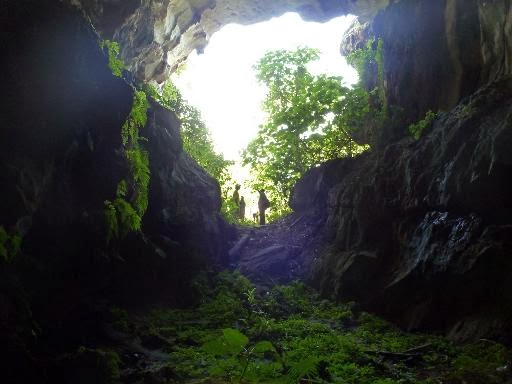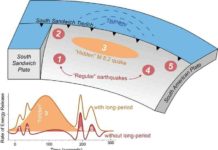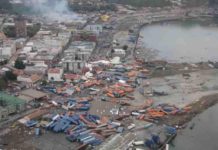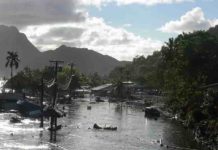
Scientists said Friday they have discovered a cave on the Indonesian island of Sumatra that provides a “stunning” record of Indian Ocean tsunamis over thousands of years.They say layers of tsunami-borne sediments found in the cave in northwest Sumatra suggest the biggest destructive waves do not occur at set intervals—meaning communities in the area should be prepared at all times for a tsunami.
“It’s something that communities need to know,” research team leader Charles Rubin told AFP, adding that the team wanted to “promote safety of coastal communities”.
Professor Rubin and other researchers from a Singapore institute were working with scientists from an Indonesian university when they discovered the cave, south of Banda Aceh, the capital of Aceh province.
A quake-triggered tsunami devastated Aceh and areas across the Indian Ocean in 2004, leaving some 170,000 people dead in the province alone.
Inside the cave the researchers found layers of sandy sediment, which had been washed in by tsunamis thousands of years previously, Rubin said.
The layers, which contained small fossils from the seabed, were well-preserved and separated by droppings deposited by bats in the cave, he added.
“This is a beautiful, stunning record of tsunamis that you just don’t have very often,” Rubin said.
Only huge tsunamis and storm surges can get into the cave, which has a raised entrance—and afterwards the sediment is protected inside from erosion by wind or water.
Rubin said the scientists dated the layers and believe they show that between 2,800 and 3,300 years ago, some four to five tsunamis battered the area.
Before the 2004 tsunami, it had been hundreds of years since such a huge destructive wave had hit Aceh, the scientist said.
But he said the new discovery suggests that tsunamis are not evenly spaced through time, which should provide food for thought for those involved in policy and planning in the region.
“These don’t happen like clockwork, they have variations in time and variations in size,” he said.
Rubin works at the Earth Observatory of Singapore, an institute that forms part of Nanyang Technological University.
Scientists from the institute were working with researchers from Syiah Kuala University in Banda Aceh.
Note : The above story is based on materials provided by AFP










